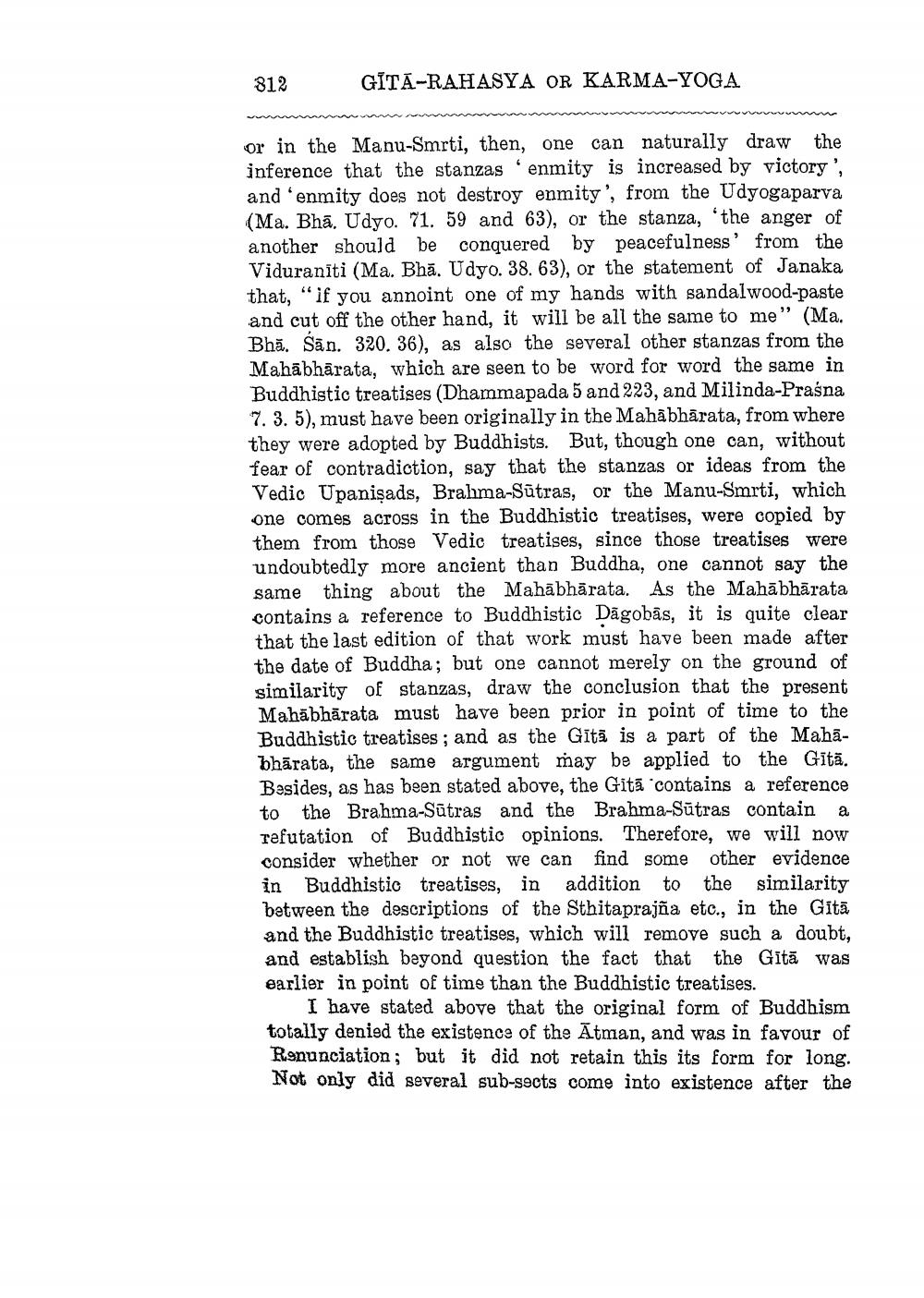________________
812
GITA-RAHASYA OR KARMA-YOGA
wete atraca. Bp
or in the Manu-Smrti, then, one can naturally draw the inference that the stanzas enmity is increased by victory, and 'enmity does not destroy enmity', from the Udyogaparva (Ma. Bhā. Udyo. 71. 59 and 63), or the stanza, 'the anger of another should be conquered by peacefulness from the Viduranīti (Ma. Bhā. Udyo. 38. 63), or the statement of Janaka that, “if you annoint one of my hands with sandalwood-paste and cut off the other hand, it will be all the same to me" (Ma. Bhā. Sān. 320. 36), as also the several other stanzas from the Mahābhārata, which are seen to be word for word the same in Buddhistic treatises (Dhammapada 5 and 223, and Milinda-Praśna 7. 3. 5), must have been originally in the Mahābhārata, from where they were adopted by Buddhists. But, though one can, without fear of contradiction, say that the stanzas or ideas from the Vedic Upanişads, Brahma-Sūtras, or the Manu-Smrti, which one comes across in the Buddhistic treatises, were copied by them from those Vedic treatises, since those treatises were undoubtedly more ancient than Buddha, one cannot say the same thing about the Mahābhārata. As the Mahābhārata contains a reference to Buddhistic Dāgobās, it is quite clear that the last edition of that work must have been made after the date of Buddha; but one cannot merely on the ground of similarity of stanzas, draw the conclusion that the present Mahābhārata must have been prior in point of time to the Buddhistic treatises; and as the Gītā is a part of the Mahabhārata, the same argument may be applied to the Gītā. Besides, as has been stated above, the Gitā "contains a reference to the Brahma-Sūtras and the Brahma-Sūtras contain a refutation of Buddhistic opinions. Therefore, we will now consider whether or not we can find some other evidence in Buddhistio treatises, in addition to the similarity between the descriptions of the Sthitaprajña etc., in the Gitā and the Buddhistic treatises, which will remove such a doubt, and establish beyond question the fact that the Gitā was earlier in point of time than the Buddhistic treatises.
I have stated above that the original form of Buddhism totally denied the existence of the Atman, and was in favour of Renunciation ; but it did not retain this its form for long. Not only did several sub-sects come into existence after the




